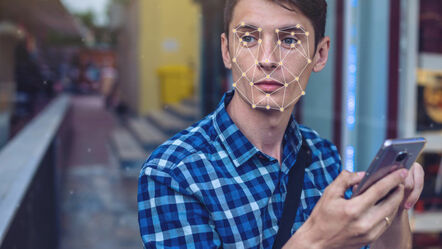New York, NY (Top40 Charts) The use of facial recognition technology is on the rise in Europe. The European Police has been sharing DNA data, fingerprints, and owner details of vehicles for the past 15 years. It can ask for fingerprints to be checked against the Spanish fingerprint database if it suspects someone is looking for someone in Spain. As a result, European legislators have passed legislation allowing the use of facial recognition on an unprecedented scale. This system will include millions of photos of people's faces. A bigger campaign to "modernise" enforcement across Europe is being pursued under Proclamation II, the data-sharing initiative, which includes developing facial recognition technology in the EU.
As Ella Jakubowska, who has worked as a policy adviser for the civil rights group European Digital Rights, has said, you are creating the most extensive surveillance infrastructure that we have ever seen. It was only through Freedom of Information that EDRi could get records demonstrating how various countries lobbied for the inclusion of face recognition technology in international law enforcement accords.
Seven European countries signed Prüm's first version back in 2005, allowing them to share data for fighting international crime. Prum II will potentially enable sharing of photos and information from driving licenses. Police will have greater "automated" access to data. Legislators say this will enable police across Europe to work together more closely and for Europol to have a greater influence.
In recent years, facial recognition technology has been derailed and misidentified as police forces have adopted it and faced significant pushback. In Prüm II, facial recognition algorithms will be included and run against facial images. Several cities in the US have banned using the technology by police forces.
Facial recognition is a feature that can be utilised retrospectively in Prüm II. The police can now compare images captured by CCTV cameras from traffic lights, outside area of restaurants, hotels, Casino NetBet, pub etc and images shared on social media platforms. The technology utilised here is distinct from the live facial recognition systems frequently attached to cameras in public locations, which have been the subject of the most controversy.
By comparing a photo with a database of photos from other countries, a nation can find out if there are any matches -- one of the most comprehensive systems for facial recognition globally. EDRi obtained a document that suggests the number of potential matches could range from 10 to 100, though politicians need to finalise this estimate.
The Prüm II documents, which date back to April 2021, when the plans began to be discussed, show all countries take a lot of photos, with 30 million taken in Hungary, 17 million in Italy, 6 million in France, and 5.5 million in Germany, the documents show.
Jakubowska points out that while most criticism of facial recognition has focused on systems that identify people in real-time, techniques that identify people later may also pose dangers. Suppose facial recognition is applied retrospectively, for example, or to footage or images.
The European Commission has proposed that public photos could not be gathered into a single database, but instead, police forces will be linked through a central router. According to the spokesperson for the European Commission, this device will not store any data, and it will act simply as a middleman between nations. Under the new infrastructure, countries only need one connection to the central router.
Prüm's planned expansion has been criticised by the European data protection supervisor overseeing data use under GDPR. The automatic search of facial images isn't only for serious crimes; it can also be used to prevent, detect, and investigate minor offences, according to EDPS President Wojciech Wiewiórowski. To ensure people's privacy rights are protected, Wiewiórowski said more safeguards should be included in the proposed regulations.
During the development of the plans, Slovenia has actively pushed for the expansion, including asking for driving license data to be included. However, Domen Savi, the CEO of Slovenian digital rights group Dr Avljan D, says significant differences between police databases.
Police databases are often ill-prepared. They contain many errors and omissions, making them difficult to use. In July of 2021, the Dutch police removed 218,000 photos from its facial recognition database that it had improperly added during July of the previous year. Due to their presence on a gang registry, over 1000 young Black men were taken off a United Kingdom gang registry in February 2021
The Slovene government has already recently faced the problem of misidentification due to this possibility. The history of a database can be entirely different based on the data source, how it was collected, and how it was used. The proposal states that the EU would be responsible for the need to connect databases to the Prüm II system, which includes the creation of new national databases for facial images. Even though facial recognition has been around for sixty years, it's still just beginning its journey.
























